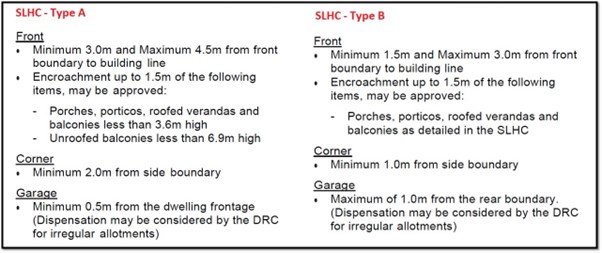Seasons Greetings
The team at Marigold would like to wish you and your family a happy and safe holiday season.
The Marigold Sales Office will be closing on Friday the 20th of December and reopen on Saturday the 4th of January 2020.

The team at Marigold would like to wish you and your family a happy and safe holiday season.
The Marigold Sales Office will be closing on Friday the 20th of December and reopen on Saturday the 4th of January 2020.

Our construction team is busy at Marigold, with lots of activity onsite and stages 1, 2 & 3 are well underway
Watch the drone footage below to see us building your beautiful new community
For full construction updates – please visit our construction portal here:
https://marigoldtarneit.com.au/my-marigold/#/

Building your dream home is an incredibly exciting, and usually a once-in-a-lifetime experience. It can also be a complex and confusing journey as you are likely not to have been through the experience before. Along with learning all sorts of new concepts, there will be a bunch of technical industry terms and lingo that you’ll also have to familiarise yourself with.
Below we have compiled a list of some of the more common terms you’ll likely encounter when purchasing house & land. Understanding a few of these terms will hopefully help you feel more at ease with the process.
However, if ever you need clarification our friendly team here at Marigold are always here to help.
Developer’s Guidelines – The Design Guidelines (DG’s) are a document that has been prepared to assist landowners and builders to achieve objectives surrounding building consistency. They cover design and materials requirements that are set out to support the quality and streetscape of the development to protect the amenity of the estate and the investment of the landowner.
These Design Guidelines may be amended on occasions at the developer’s discretion as they are subject to council approval and reflect changes in design trends or to coincide with the release of later stages. Landowners are required to submit their proposed building plans through the Design Review Committee (DRC) for approval which is assessed against the current version of the Design Guidelines. All applicants should review these Design Guidelines in conjunction with their land Contract of Sale. A copy can be found in both your contract of sale and is also available on our website here.
Lot Number – The lot number refers to the identifying number the lot has been allocated before the Plan of Subdivision (POS) has been registered. Once the plan of subdivision has registered with the Titles Office, the street address takes over as the identifiable and legal name of the block.
Fill – Fill refers to the amount of earth that has been added to the lot or stage determined by engineers to guarantee the stability of your block.
Fall – Fall refers to the slope or gradient of the lot.
Crossover – Also known as a driveway, this is the area where your property will interface with the street and footpath. You are not permitted to build on the crossover.
Easement – An area of a property that indicates where sewage and drainage services are located, generally towards the rear of the block but can also run along the side of a property. This area must remain free from development to allow for ease of access to these services. There is usually a setback (see above definition) requirement in place surrounding an easement.
Boundary – A line that divides one area from another such as a boarder. Also, this could be a side boundary which means the boundary of a Lot that runs between and connects the Primary Frontage of a Lot to the Rear Boundary of a Lot. Or a construction boundary, the line beyond which the construction buildings and /or construction works must be within.
Recycled Water – Also referred to as Reclaimed Water this refers to treated or recycled wastewater of a quality suitable for non-drinkable uses such as landscape irrigation and water features. This water is not intended for human consumption.
Fibre to the Home – Is the Fibre Optic telecommunications cables connected to each home to ensure the delivery of the high speed broadband network to each home. There are two main network connections being NBN and Opticomm depending on your estates’ connectivity location.
Soil Test– A soil test determines the quality and type of soil that your lot contains. The soil type and quality determine the type of foundation your house will require. Your builder will take care of this when preparing for the construction of your home. A soil test may take place once a Stage has been granted Statement of Compliance (SOC).
Soil Test– A soil test determines the quality and type of soil that your lot contains. The soil type and quality determine the type of foundation your house will require. Your builder will take care of this when preparing for the construction of your home. A soil test may take place once a Stage has been granted Statement of Compliance (SOC).
Soil Test– A soil test determines the quality and type of soil that your lot contains. The soil type and quality determine the type of foundation your house will require. Your builder will take care of this when preparing for the construction of your home. A soil test may take place once a Stage has been granted Statement of Compliance (SOC).
Statement of Compliance (SOC) – Each Stage must undergo an approval process with the authorities and counci; to ensure it meets regulatory requirements. Once a Statement of Compliance has been achieved a stage can be lodged at the Titles Office.
Practical Completion (PC) – Practical Completiton signifies the completion of all major construction works. The construction team confirm the stage is ready for Statement of Complaince checks to begin.
Site Costs – refers to the cost of preparing your block of land for building. Site costs are dependent on the fall/fill and soil testing report of the block as this determines the engineering requirements for the foundations of the home.
Settlement – Is the official process that is carried out by both purchasers and vendor’s and their conveyancers/solicitors and financial institution on their behalf. At settlement, you as the purchaser, are required to pay the balance of the purchase price through your lender (being your loan) which enables you to take possession of the property. The property title is then transferred into your name as the legal owner of the property.
Lot Pegs – Also known as ‘survey pegs’ or ‘boundary pegs’ are placed at each corner of your lot to identify your land boundary from others. These are used throughout the valuation process and when your builder first begins construction on your block.
Valuation Inspection – Your elected financial institution will order a Valuation Inspection when you are in the final stages of finalising your loan application. Your elected financial institution performs an inspection of the lot to confirm its value. This occurs when the stage is in its Practical Completion (PC) phase. We will alert both you and your conveyancer when access is allowed to perform a valuation inspection.
Anticipated Title – The expected or likely date a stage will receive title registration from the Titles Office.
Titled vs Untitled Land- Titled means the land is officially registered with the Titles Office. This process involves creating individual titles for each house block (or street addresses). The parcel of land that houses your stage changes from being listed under one title (the developer) to having many titles (you and your neighbours). Once the land has titled, you may begin construction of your home.
Conversely, Untitled land is unregistered land that is sold off the plan while construction of the land is yet to be completed and before it can be registered with the Titles Office. Untitled Land can be presold at varying times before the anticipated title date and is usually presold between 12 – 18 months from the anticipated title date. The longer the sell date is from the anticipated title date, the more time you have to save, decide on your builder and finalise your building plans and permit.
Small Lot Housing Code: also known as SLHC. Lots that are less than 300m2 fall into SLHC requirement. The code was introduced to remove the need for a planning permit with a clear set of house design and siting standards including requirements for setbacks, building height, provision for car parking and private open space, overlooking/over shadowing and building articulation that are required to be met.
Depending on each council, the SLHC have been split into Type A and Type B. This is to allow maximum use of your lot. Please see image below for further explanation.

The Marigold sales team are happy to help by answering any queries you may have as you embark on your building journey and wish to make it as simple, easy and exciting as it should be.
If you wish to speak to our sales team, please feel free to reach out on either of the following methods:
Call today on 1300 888 181 or email info@marigoldtarneit.com.au.
To take your first step towards a beautiful life at Marigold, simply complete the following details. We’ll keep you updated about our forthcoming release, so you have the opportunity to be first in line on the day.